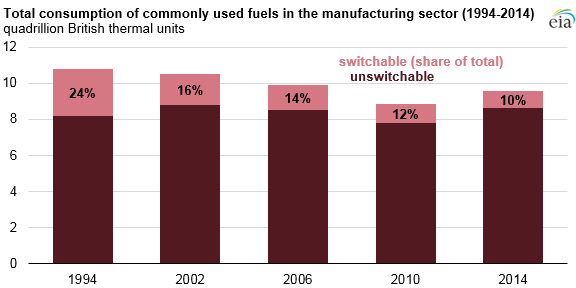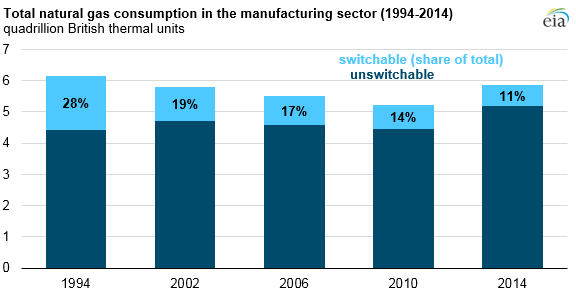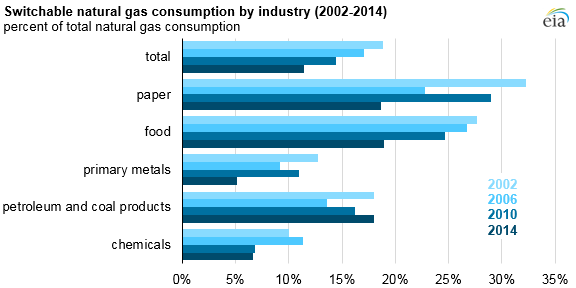Some manufacturing plants can take advantage of relative price differences and cope with supply shortages by switching the fuels used in their furnaces, boilers, ovens, and other combustors. In the United States, the capability of the manufacturing sector to switch the fuels it uses has declined in recent decades, as described in a new report from EIA’s 2014 Manufacturing Energy Consumption Survey (MECS).

In 2014, the reason most cited by respondents for not being able to switch fuels used in U.S. manufacturing was that the equipment onsite would not support it. That reason accounted for 78% of unswitchable natural gas consumption, 75% of unswitchable electricity receipts, and 62% of unswitchable coal consumption. Other reasons for being unable to switch fuels included lack of availability of alternative fuels, environmental restrictions on alternative fuels, and restrictions of long-term contracts.

The shift away from using other fossil fuels in U.S. manufacturing, such as coal and petroleum products, was the result of increased availability of natural gas, lower natural gas prices relative to other fuels, and the ability of manufacturers to comply with environmental regulations when using natural gas. These factors led manufacturers to focus on natural gas use and to discount the value that fuel-switching capability had provided in earlier years. The share of manufacturing’s natural gas consumption that was unswitchable increased steadily between 1994 (72%) and 2014 (89%).

Industries that have high demand for natural gas as a chemical feedstock to make other products find it less useful to invest in fuel-switching flexibility than industries without such requirements. For example, natural gas is commonly used to produce ammonia for the manufacture of nitrogenous fertilizers. In that subindustry, 96% of the natural gas consumed as a fuel was not switchable in 2014.
Principal contributors: Robert Adler, Maggie Woodward

Follow us on social media: